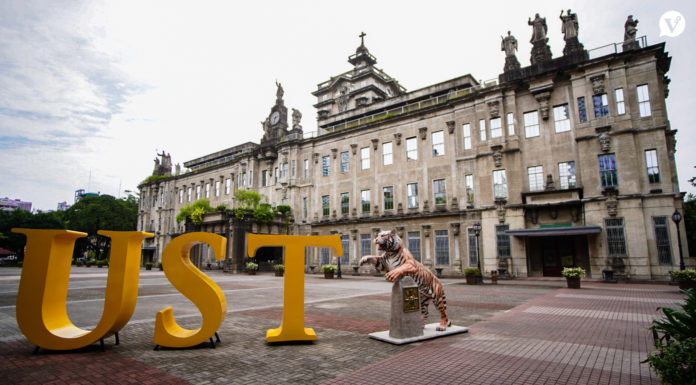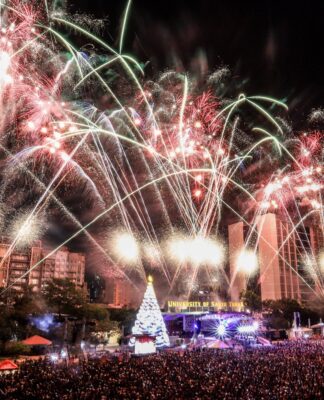IT IS only fitting to crown a mother who has shown unconditional love to her children and has protected the defenseless and forsaken.
Fourteen years after the coronation of Our Lady of the Abandoned in Sta. Ana, Manila a replica of the Nuestra Señora de los Desamparados in Spain, another canonical coronation event will take place on Oct. 23 as Pope Benedict XVI approved the crowning of the Our Lady of the Abandoned in Marikina City.
The Marikina image will be the first in the Philippines to be canonically crowned under the new papacy. The request for the coronation was proposed by Canonical Coronation Committee Chairman, Bro. Dino Carlo Santos. Through their parish priest, Msgr. Arnel Lagarejos, the proposal was sent in August 2004 and was approved two days after the election of the new pope last April.
A canonical coronation is the Holy See’s recognition of a certain Marian image being venerated in the locality. The Marikina coronation will coincide with the 214th anniversary of the shrine’s consecration in the city.
The process for the coronation started in 2001 when the coronation committee started to gather the necessary data for the coronation. These were submitted to the Apostolic Nuncio Franco who gave the documents to the Sacred Congregation for Divine Worship in Vatican. The petition was initially dismissed because it lacked information on miracles attributed to the Marian image.
But it was only a temporary setback. After the supplemental documents were submitted, Pope Benedict XVI approved the petition for canonical coronation.
Coronation is one form of respect attributed to the Blessed Virgin Mary, while a canonical coronation acknowledges the faithful devotion of the people to a miraculous Marian image. Before it can be canonically crowned, the Congregation requires that an image is historically old, celebrated, and serves as an inspiration that rouses the people’s faith and hope.
History of miracles and devotion
There are four parishes of Our Lady of the Abandoned in the country.
The oldest was established in Sta. Ana, Manila, in 1720, under the leadership of Franciscan Friar Vicente Ingles who brought the first Our Lady of the Abandoned image to the country. The image is a replica of the original image in Valencia, Spain. In 1791, another parish was built in Marikina with the Lady as their patroness. Subsequently, in 1863 and 1980, two other parishes were created in Muntinlupa and Mandaluyong.
Unlike the replica in Sta. Ana, Marikina’s first image od the Lady existed out of people’s contribution who wanted an image for their church. In 1902, a new statue was made after the old one was burned in 1898. Distinctively, the new image is Filipino in features. Like other Marian images, the story of the first Lady’s image began with a miracle.
In the 15th century, a confraternity or cofradia was established to help the insane, poor, and the abandoned people in Valencia.
The confraternity wanted a statue of the Virgin as a symbol and inspiration in its mission, so the members sought for an artist who can carve a beautiful Marian image but the search was futile.
One night, however, three handsome young men knocked on the Cofradia’s door asking for refuge. In return of the good will, the three youths offered to sculpt the image provided they are kept alone and with a ration of food for three days.
But the brothers were puzzled by the lack of sounds indicating labor. On the third day, upon hearing melodious hymns, the inquiring members of the Cofradia checked on the workers, but were surprised to find only an exquisite brown Madonna in a golden garb with a baby Jesus in her left hand and lilies on the other. The food was untouched and there were no traces of the young men. It was believed that the young men were angels.
The city and the patroness
The creation of the image of Nuestra Señora de los Desamparados, already a miracle in itself, preceded countless mysteries in the Philippines attributed to her.
A notable miraculous incident happened during World War II when Japanese forces dropped bombs on the Marikina church. The first bomb all but leveled the church, but miraculously, the image survived the blast.
Meanwhile, the second bomb did not explode, saving the town from more damage.
The document sent to the Vatican also told the story of guerrilla Sgt. Patricio Pascual and his soldiers who survived Japanese checkpoint near the battlefield of Pangil, Laguna after he prayed to the Our Lady of the Abandoned for their safe exit. According to his son, Demetrio Pascual, who recounted the story, although Sgt. Pascual and his men escaped through a vast plain, the Japanese forces did not see them as they were guided by the Lady.
Despite being the patron of the oppressed among the Catholics, her love and affection is not confined to them. She is also the protector of the poor, condemned, and abandoned. Even non-Catholics have had their prayers answered through the intercession of the Lady.
In 1980, two children of a Chinese parishioner, Perlita Lu, were kidnapped. She alerted the police and prayed unceasingly to the Lady for help. After two days, the Lus safely recovered their children and with no ransom paid. Thus, the Marian image is also considered as the patroness of kidnap victims.
But the rescue of the children was not the only miracle which happened in the Lus household. After the kidnapping incident, Mr. Lu, a non-Catholic, was converted and baptized.
In October 1990, another miraculous incident was attributed to the Lady after Irineo Iglesias Jr., who had lung cancer, was declared to have had only six months left to live. He refused to undergo cobalt therapy and spent his time praying to God through the Blessed Mother. He was fully healed and became an active server in the parish.
The town people also believed that the Lady exhibits emotions.
“The image joined for the first time the Annual Grand Marian Procession in Intramuros, Manila. The devotees that accompanied the image saw the extraordinary radiance that the face of the image was showing. They took it as a sign that the Virgin is happy for the honor given to her. One of the witnesses, Dr. Romeo Cruz, confirmed this phenomenon by revisiting the image after it was brought back to the altar. The radiance she showed during the procession was no longer there,” the statement read.
In another instance, the Lady once flooded the city after a thief stole its precious crown along with the aureole and the baby Jesus. The people were quick to say that the even was caused by the Lady’s grief.
Marikina’s recent miracle
Although the committee was faced with many obstacles, it seemed like the group always has someone to help them rise above the adversities.
Because the group was hard-pressed of the recorded miracles needed as a lot of it was burned in World War II, the coronation committee announced to the people that they are in need of written testimonies of miracles attributed to the Lady. The problem was solved as many people submitted stories of miracles.
After the gathering of miracles, the next big problem was the signatures of the people who patronize the image. The group doubled their efforts and visited every parish in Marikina. The folks of Marikina were very sympathetic that after quite some time, they collected 15, 000 signatures.
When the news arrived that the Pope has approved of the canonical coronation of the image, Bro. Dino Santos and the CCC could only be filled with high spirits.
“Noong pinaghihirapan pa namin yung petition, sabi ko talaga iiyak ako. Kaya nang dumating yung balita, overjoyed kaming lahat kasi hindi talaga biro yoong pagod na dinanas namin. It was really worth the hardship that we underwent,” Santos said.
Although Philippine history shows that Filipinos have a lot of statues of the Virgin Mary, this brown Madonna has become another symbol of a mother who remembers those people who are left in despair and in agony. She serves as the beacon of faith for those who have gone unnoticed and whose hopes have dwindle in the middle of great suffering. Mary Rose M. Pabelonia















